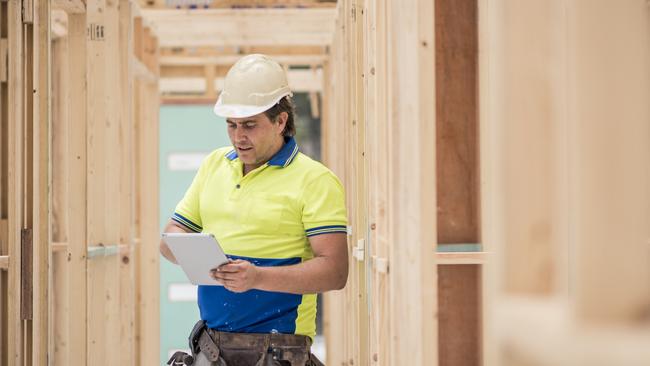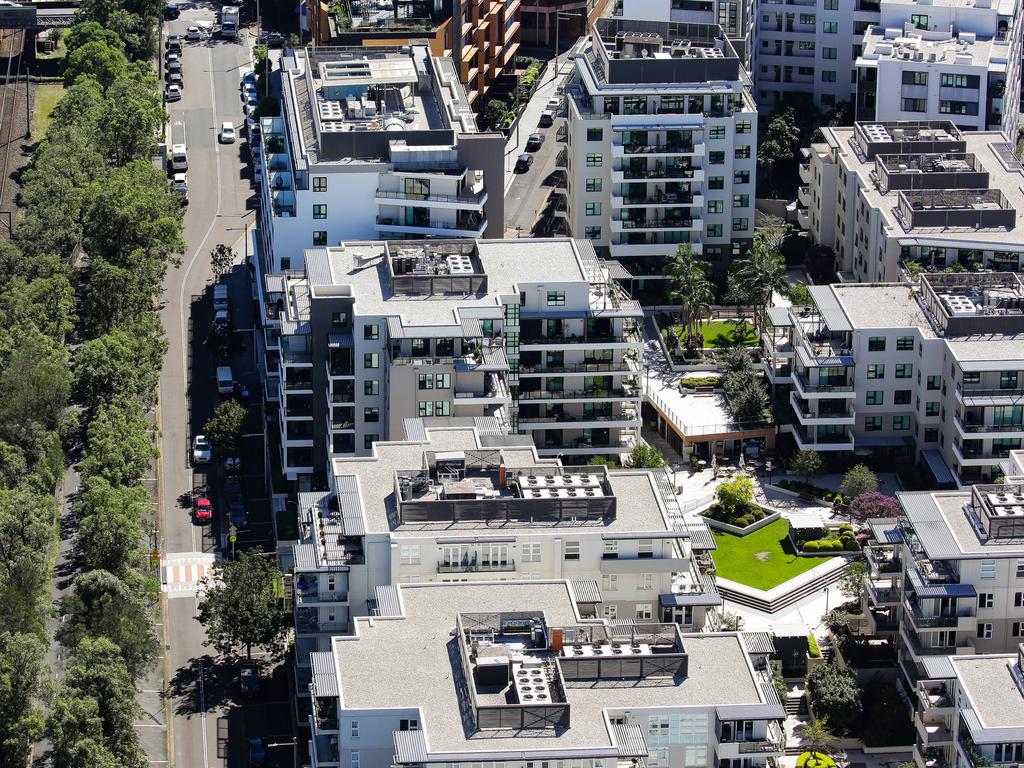Housing, rental crisis: Construction companies are failing at nearly double the pace of last year
Construction companies are failing at nearly double the pace of last year as a report predicts the country will build 100,000 fewer homes than needed over the coming five years.

Construction companies are failing at nearly double the pace of last year as a new report predicts the country will build 100,000 fewer homes than needed to keep up with demand over the coming five years, compounding the rental affordability crisis and making it harder for Australians to buy their first home.
Nearly 1500 building firms have failed since June 30, according to ASIC data, on track for the worst year in at least a decade.
Analysis by The Australian shows this accounts for nearly three in 10 insolvencies so far this financial year.
The new figures come as the National Housing Finance and Investment Corporation said surging immigration and a downturn in the building sector meant household formation would “outpace new supply for several years”, leading to intensifying affordability issues among renters and first home buyers.
The Australian has revealed the nation is set to experience its biggest two-year population surge in its history, with an extra 650,000 migrants across this financial year and the next.
“Returning migration at a time of low vacancy rates is likely to result in upward pressure on rents,” the NHFIC report said.
The paper highlighted that the rental squeeze would shift towards inner-city areas, with the expected shortfall in the construction of new apartments accounting for 62,300 of the anticipated 106,300 shortfall total out to 2027.
Commission chief executive Nathan Dal Bon said the analysis suggested the major problems of affordability would only intensify, “underscoring the need for a holistic approach to mitigate the housing pressures Australians are facing”.
Housing Minister Julie Collins said the paper underlined the need for Labor’s $10bn Housing Australia Future Fund, which failed to pass through parliament in the recent sitting fortnight thanks to strong opposition from the Greens and independents, who are demanding more investment to build social housing.
Ms Collins said the estimated building shortfall emphasised that all levels of government needed to work together to help solve the housing challenge.
With new monthly home sales plummeting to their lowest level since at least 1996, Master Builders Australia chief executive Denita Wawn said “we are concerned with the decline in sales for volume builders reflecting a potential decline in activity for 2024 which will exacerbate an already difficult housing supply market both for rental and owner-occupiers”.
Ms Wawn said “the most sustainable solution to the inflationary problem lies on the supply side, by bringing down the cost of doing business”.
“This requires issues like labour shortages, materials costs, and the regulatory burdens to be dealt with in a focused and urgent manner,” she said.
The Reserve Bank’s monthly board meeting on Tuesday may deliver a pause in its most aggressive policy tightening in decades, but NHFIC said the damage of earlier and faster-than-expected rate rises was already done and would drag on the supply of new homes.
“Over the 3 years to 2024-25, NHFIC expects an average of 138,100 net new additions to be added to Australia’s housing stock. This is well below the 180,000 average each year forecast in last year’s report for the same period,” the report said.
Amid a souring mood among builders, industry experts believe the climbing insolvency numbers reflect the surging cost pressures and ballooning build times that plunged fixed-price contracts into the red during the pandemic.
They said the picture for the sector looked more positive this year and beyond as these pressures ease and contracts are adjusted to better reflect industry conditions.
But the shock failures of Melbourne-based Porter Davis on Friday – leaving 1700 homes unbuilt – and school-builder Lloyd Group underlined the ongoing struggles facing some construction companies, particularly those large firms that are trying to work their way out of the massive holes blasted in their balance sheets over the past two years.
The latest ASIC insolvency statistics showed 1447 construction firms have gone under in the financial year to March, against 836 this time last year and the highest since the regulator began publishing the industry-level data in 2013-2014.
About 28 per cent of total company insolvencies through this period were in the building sector, against a 10-year average of 20 per cent.
The price of inputs to construction are up nearly 30 per cent versus pre-pandemic levels. Cost inflation growth peaked at 17 per cent in the year to June, and has since eased to a still-high 14 per cent, according to the Australian Bureau of Statistics’ index of producer prices.
The price of timber jumped 17 per cent last year, steel products 16 per cent, while the cost of concrete, cement and sand climbed 15 per cent, the ABS data shows.
Russ Stephens, the co-founder of the Association of Professional Builders, said construction firms – particularly large ones such as Porter Davis – had accumulated huge losses over the past two years that they were struggling to fill.
“The easing of demand is certainly taking some of the pressure off some of the builders, but the real issue here is that a lot of the big companies are desperately trying to sign new contracts to shore up their cash flow,” Mr Stephens said.
“They need new money coming in to pay creditors – they are essentially robbing Peter to pay Paul. They need high revenues so they can trade their way back, and that could take years.”
But Housing Industry Association chief economist Tim Reardon played down a potential wave of insolvencies, saying the figures were not too far above pre-pandemic levels and that conditions in the industry were easing as costs came down.
“Builders tend to go broke on the up cycle, not the down cycle. This is an echo of what happened last year, and we are at the tail end of that cycle,” Mr Reardon said.







To join the conversation, please log in. Don't have an account? Register
Join the conversation, you are commenting as Logout